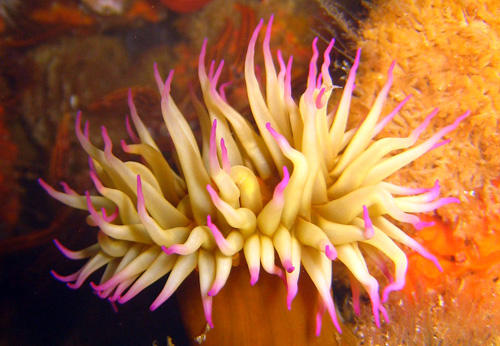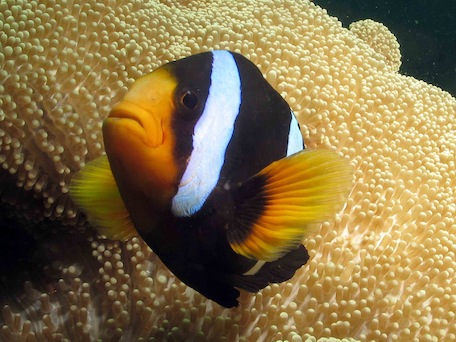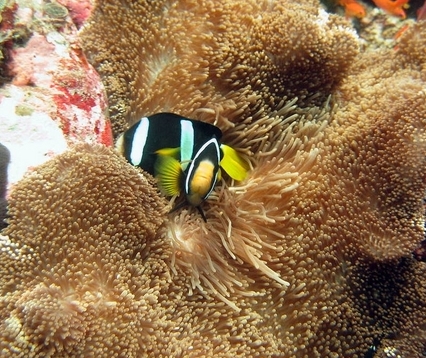It got its name from a beautiful flower but the anemone is anything but a plant. Despite its innocent look this beautiful animal is lethal for some of the smaller creatures of the sea like fish and plankton. This meat-eating invertebrate is a diverse organism and can live for as long as 80 years and more. They do not age, quite fascinating I know. This means that they can live on forever, but at some point they will fall prey to predators.
Did you know that there exists more than 1000 different species of the anemone? The anemone mostly thrive on tropical reefs, although there are species adapted to relatively cold waters. You can find the anemone in oceans from the tropics to the poles and they can grow up to nearly 2 m.
With their beautiful and various colors and reaching tentacles the anemone really are nice to rest your eyes on. They might look harmless but they can be quite vicious. Anemones has several stinging polyps. The lightest touch will activate their venom filled tentacles, making firing harpoon like filaments penetrate the prey. The venom will paralyze the fish which let the anemone navigate the prey down their mouth located in the middle of their bodies.
I help you if you help me. This flower like animal has a few unusual tricks up its sleeve. They have symbiotic relationships with some other animals. One example is the clown fish that lives within the arms of the anemone. The clown fish is covered in a mucus layer that protects them from the anemone stings and let them live within their tentacles. Returning the favor the anemone fish keeps the anemone clean and they also let it have a snack on their remaining. This clever animal can also hitch a ride with other animals of the sea, such as crabs to change their hunting area.
Have you ever seen an anemone in movement? The anemones are capable of slow movement. They just simply swim with their tentacles or moving by flexing their body. And if you ever see an anemone taking a slowly stroll over the sea bed, it’s simply nothing weird by that. But it’s not anything you going to see every day, this lazy creature only move if they really have to.
How do they reproduce? The anemone can use both sexual and asexual reproduction. The asexual one means that they simply divide themselves in two where, each part forming a new animal, and they are now clones of each other. Fascinating little creatures as they are, other species are hermaphrodites producing both eggs and sperm.
At the beautiful Anemone reef close to Shark point you can lay eyes on an underwater landscape covered in anemones. Join us on a trip to this dive site, and learn more about these fascinating animals.





